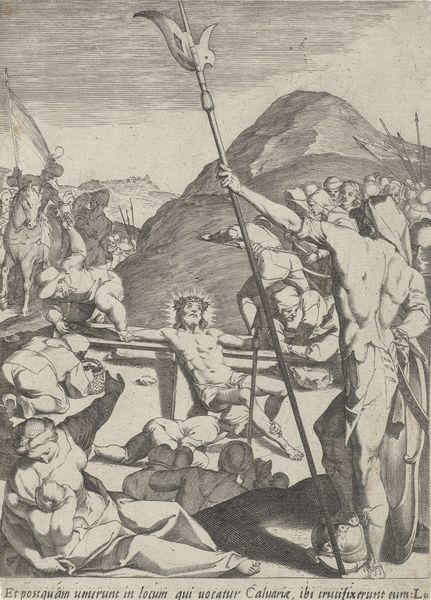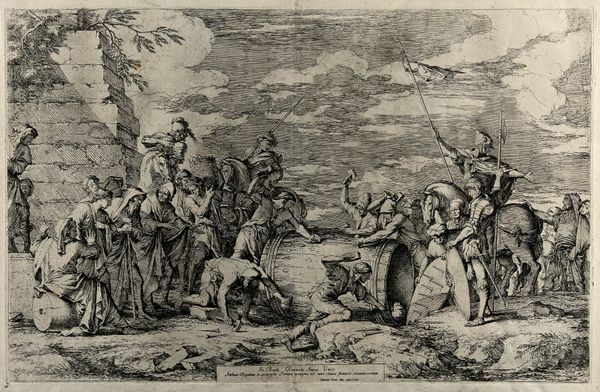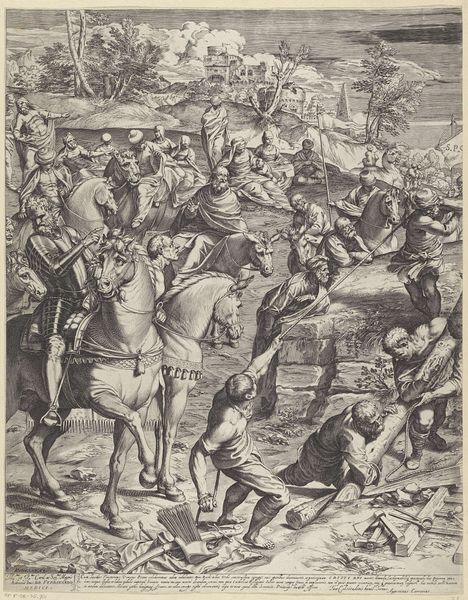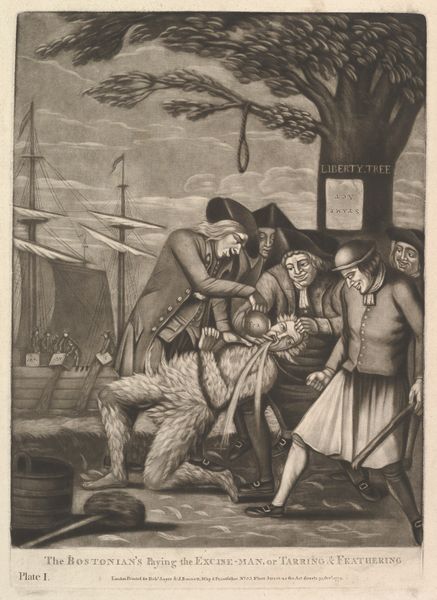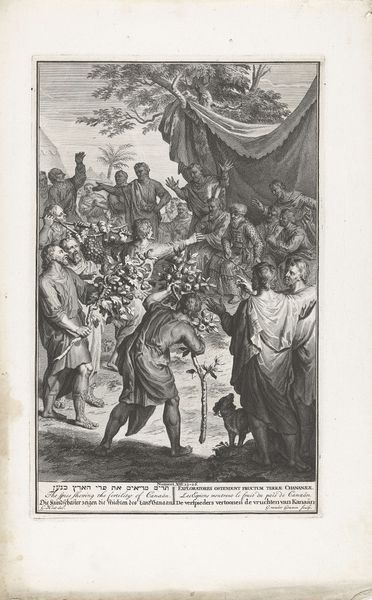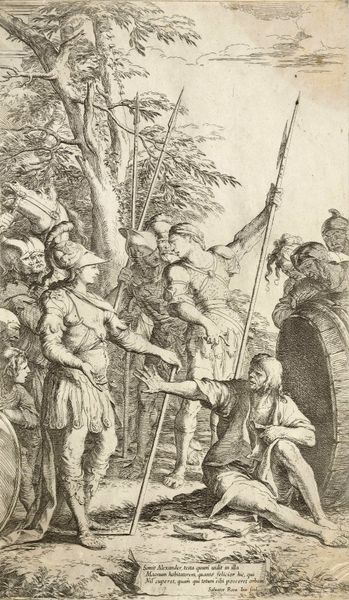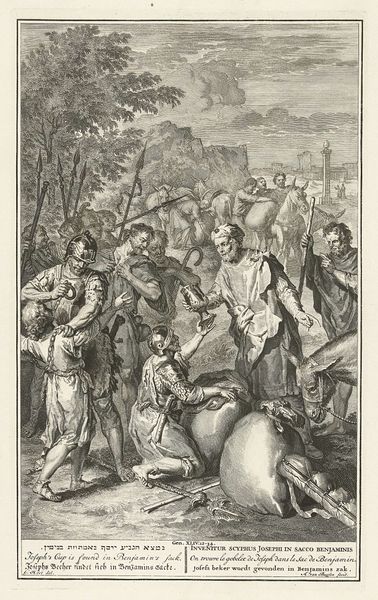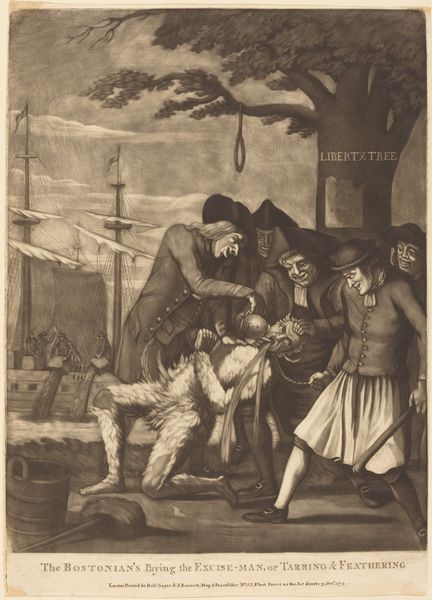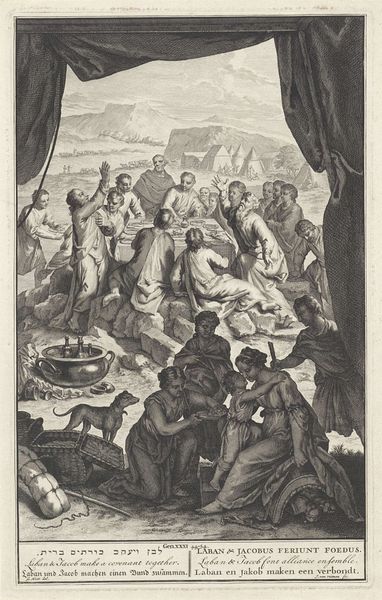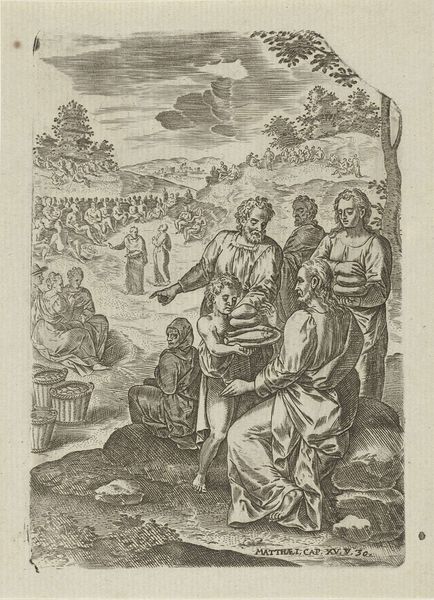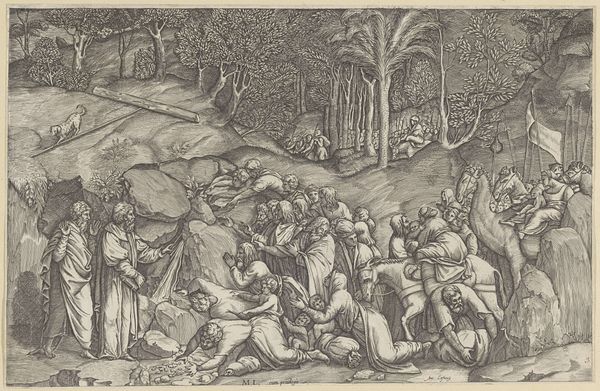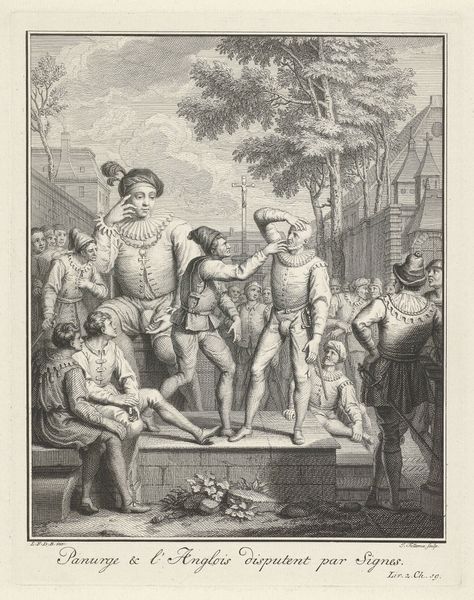
print, engraving
#
baroque
# print
#
figuration
#
history-painting
#
engraving
Dimensions: height 183 mm, width 128 mm
Copyright: Rijks Museum: Open Domain
Curator: Here we have Pieter de Jode I’s “The Arrest of Christ,” a print held at the Rijksmuseum, and estimated to have been produced sometime between 1590 and 1632. The detail in this engraving is quite remarkable. Editor: It's arresting, literally. The dramatic staging, with that central illuminated figure, Christ, immediately draws the eye. The sheer volume of bodies surrounding him creates a palpable sense of entrapment. Curator: Yes, the way de Jode uses engraving allows for such intricate detailing, especially in the textures and the layering of figures. Think about the workshop practices; prints like these were often collaborative, involving specialized artisans. Editor: And the formal tension is magnificent. The swirling drapery of the figures, contrasted with the harsh lines of the weapons. The darkness of the wood juxtaposed with the lantern's stark glow creates drama. Compositionally, there’s something undeniably baroque in its dynamism. Curator: The means of production also reflect socio-political dimensions; the engraving process enabled the wide dissemination of religious imagery during a period of intense religious and political upheaval. These prints shaped the material culture and devotional practices of their time. Editor: Absolutely, and those diagonal thrusts across the frame propel the viewer’s eye and build the intensity of the moment— a truly exceptional arrangement. Curator: Seeing this image then tells us much about the systems of artistic creation, from material investment to distribution networks to modes of spectatorship in early modern Europe. Editor: A fascinating interplay of artistic elements creating an emotional tableau: from light and dark contrasts to lines and texture that contribute a strong message of dramatic arrest.
Comments
No comments
Be the first to comment and join the conversation on the ultimate creative platform.
